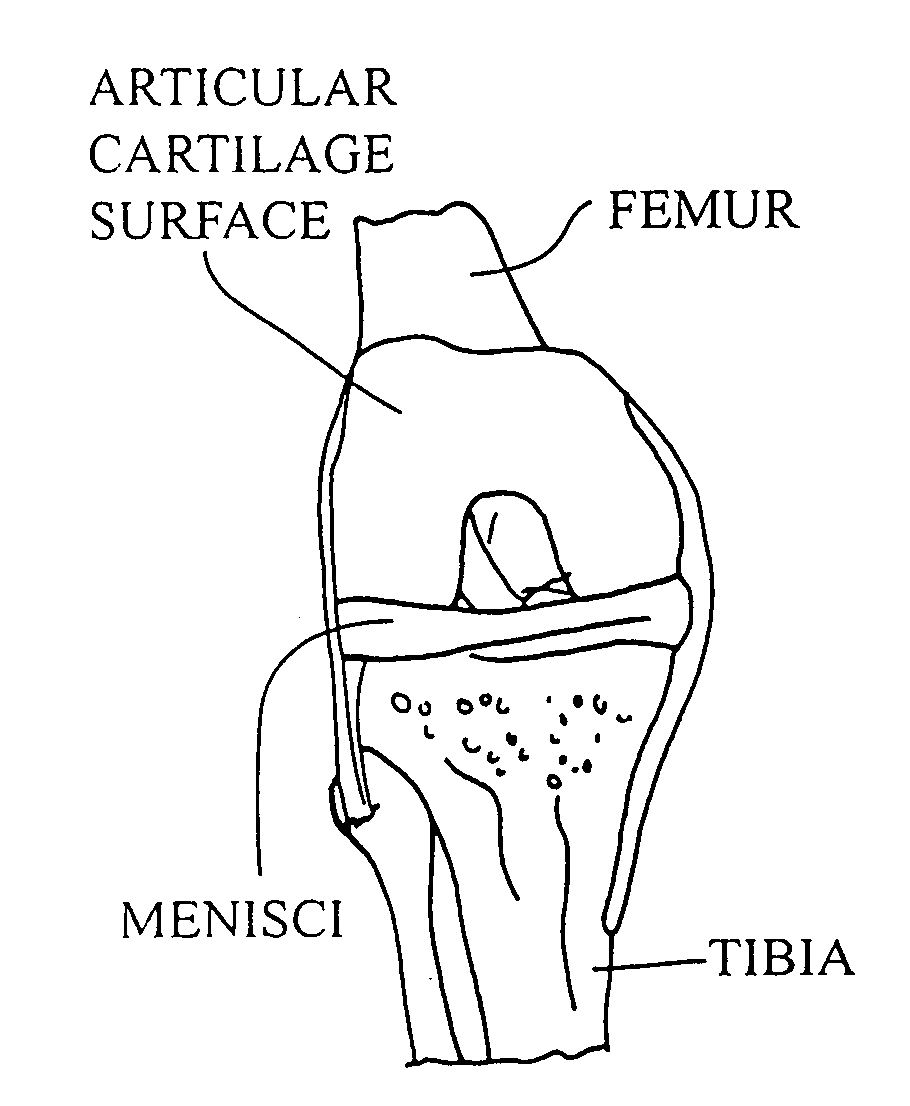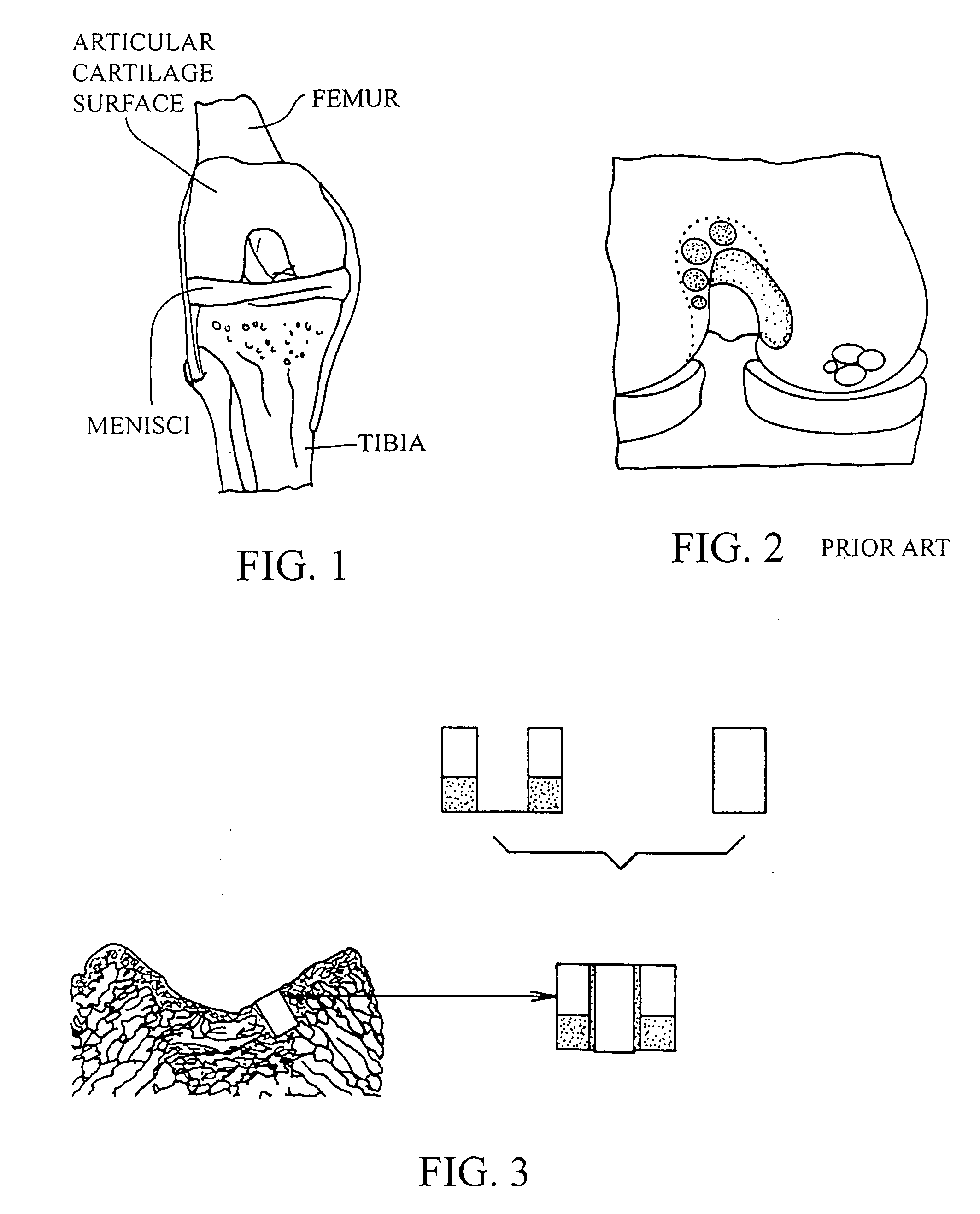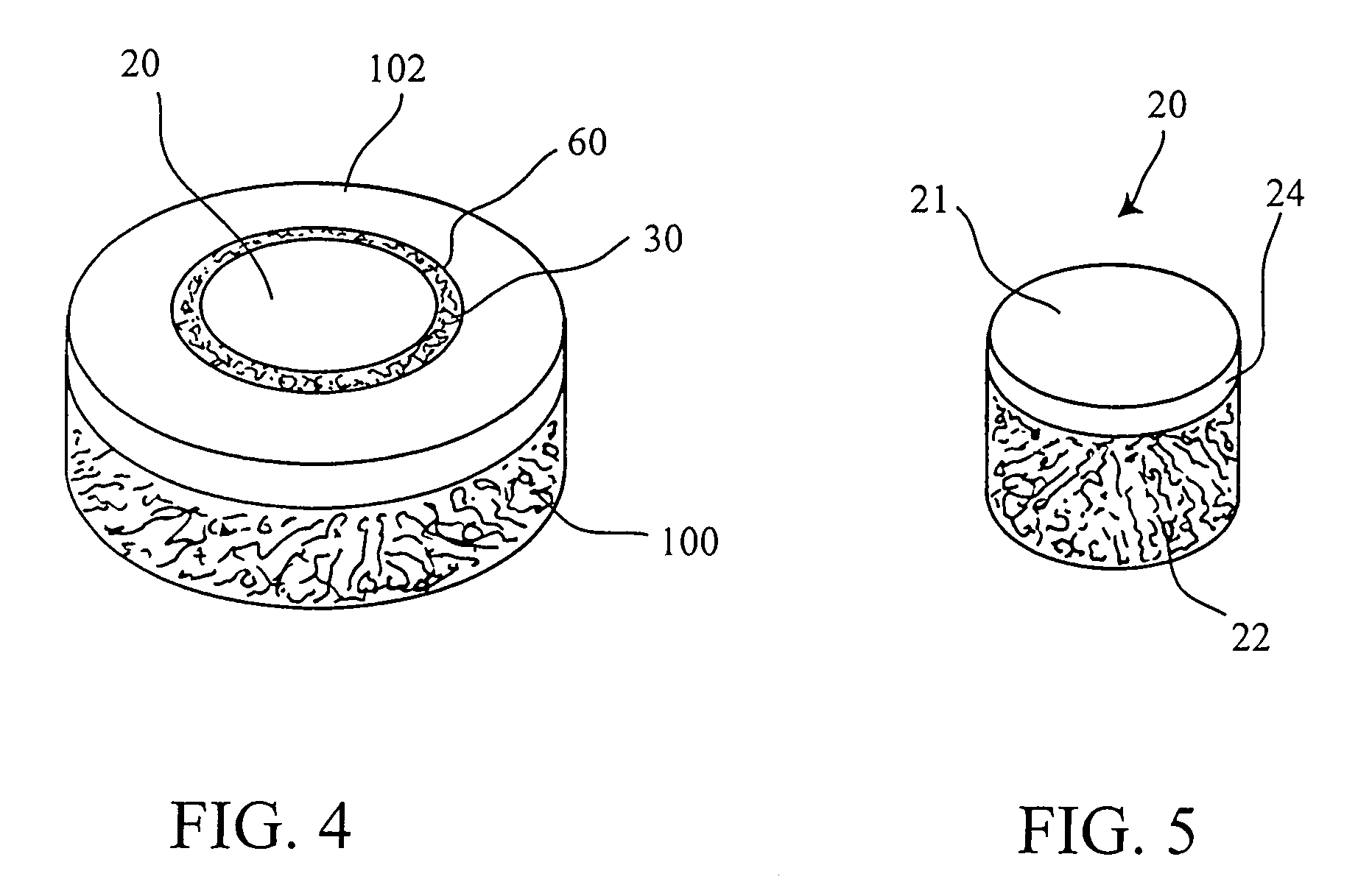Cartilage implant plug with fibrin glue and method for implantation
a cartilage implant and fibrin glue technology, applied in the field of surgical implants, can solve the problems of affecting the healing effect of hyaline cartilage, and affecting the healing effect of articular cartilage lesions, so as to achieve the effect of restoring normal function and being easily placed by the surgeon
- Summary
- Abstract
- Description
- Claims
- Application Information
AI Technical Summary
Benefits of technology
Problems solved by technology
Method used
Image
Examples
example 1
[0052]Allograft cartilage particles having a size ranging from 0.01 mm to 0.21 mm were added to and mixed with fibrinogen solution and 30 μL of fibrinogen solution was inserted in a first automated pipette. The pipette tip was changed, the pipette was set to 60 μL and 30 μL of thrombin solution was taken into the pipette resulting in a mixed solution. The mixed solution was delivered immediately over and into the gap between the bore side wall and the plug and the fibrin glue was allowed to polymerize for 3 minutes at room temperature.
example 2
[0053]Allograft cartilage particles having a size ranging from 0.01 mm to 0.21 mm were added to and mixed with thrombin and 30 μL of thrombin solution was inserted in a automated pipette. The pipette tip was changed and 30 μL of fibrinogen solution was taken into the pipette resulting in a mixed solution. The mixed solution was delivered immediately into and over the gap between the bore side wall and the plug and the fibrin glue was allowed to polymerize for 3 minutes at room temperature.
[0054]The operation of placing a preshaped allograft implant assembly in a cartilage defect, utilizes a subchondral bone and an overlying cartilage cap plug which has been treated to remove cellular debris and proteoglycans and milled cartilage in a carrier. The steps of the operation are: (a) drilling a hole which can be in the form of a cylindrical bore in a patient at a site of a cartilage defect to a depth which is equal to the length of the bone and cartilage cap plug implant, (b) placing a pr...
PUM
| Property | Measurement | Unit |
|---|---|---|
| size | aaaaa | aaaaa |
| size | aaaaa | aaaaa |
| size | aaaaa | aaaaa |
Abstract
Description
Claims
Application Information
 Login to View More
Login to View More - R&D
- Intellectual Property
- Life Sciences
- Materials
- Tech Scout
- Unparalleled Data Quality
- Higher Quality Content
- 60% Fewer Hallucinations
Browse by: Latest US Patents, China's latest patents, Technical Efficacy Thesaurus, Application Domain, Technology Topic, Popular Technical Reports.
© 2025 PatSnap. All rights reserved.Legal|Privacy policy|Modern Slavery Act Transparency Statement|Sitemap|About US| Contact US: help@patsnap.com



